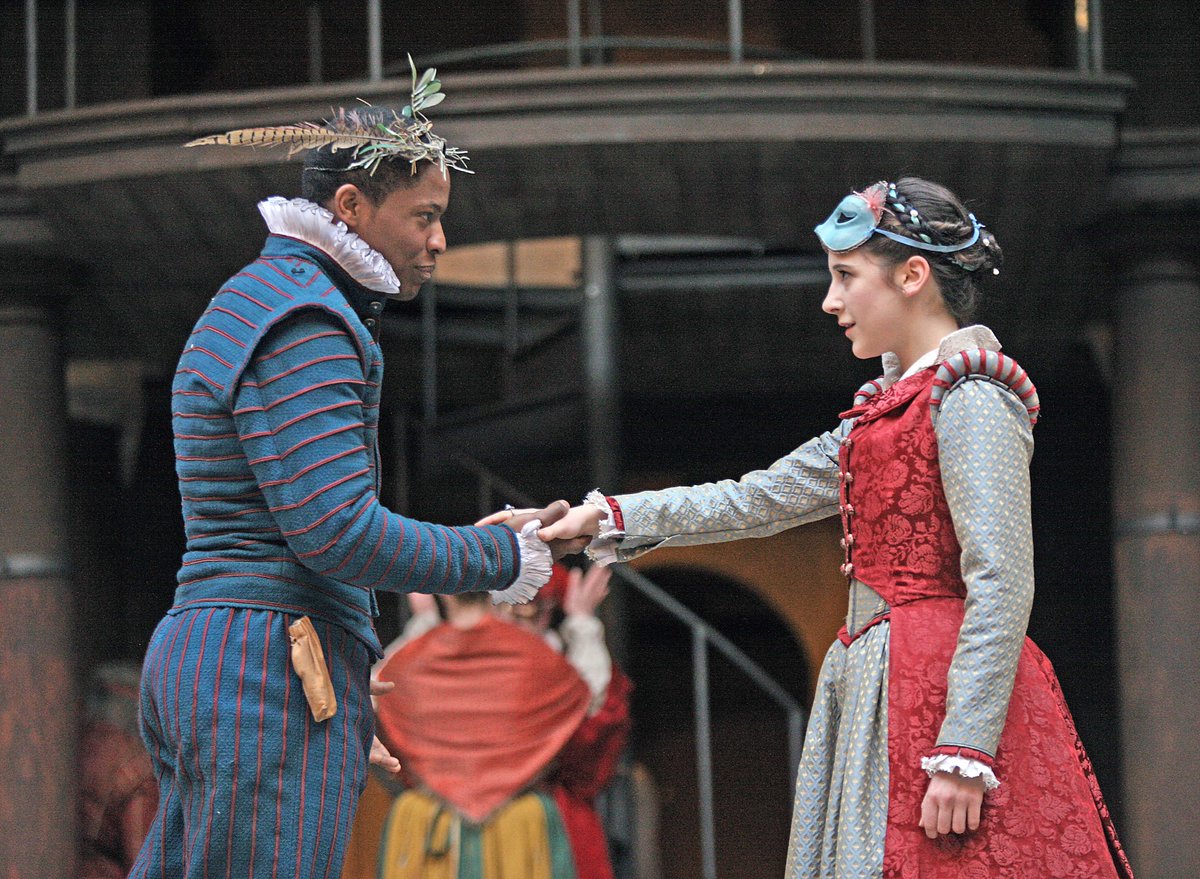Romeo and Juliet is one
of Shakespeare's best-known tragedies and probably the most
famous love story of all times.
In world literature
Romeo and Juliet have become archetypical ill-fated lovers, and countless other
literary and artistic works have been based on this
Shakespearean drama, such as the Academy
Award-winning films West Side Story (1961) and Shakespeare
in Love (1998).
Romeo
and Juliet was written relatively early in Shakespeare's
career, around 1594-1595, around the same time as the comedies Love's
Labour's Lost and A Midsummer Night's Dream. These
plays are often grouped together because they explore the themes of love,
courtship, and marriage. These plays also share a similar poetic quality in the
language used, as they incorporate sonnets and the conventions associated with
them such as falling in love at first sight.
Shakespeare's
audience already knew the essential story of Romeo and Juliet, a popular story
in European folklore which Arthur Brooke had translated into English in 1562 as
a poem called The Tragicall Historye of Romeus and Juliet. Brooke's work was based on a French version (1559) of the
tragedy by Pierre Boiastuau, who based his story on a 1554 Italian work by
Matteo Bandello, a monk and author of 214 tales. Sources for certain plot
devices probably included Il Novellino (1476), by Masuccio of
Salerno; Hystoria
Nouellamente Ritrouata di Due Nobili Amanti (1530),
by Luigi da Porto; and the ancient mythological tale of Pyramis and Thisbe.
Shakespeare
improved on his sources, developing the characters, condensing the time frame,
and adding certain scenes to emphasize his own themes.

Despite
the fact that the Montagues and the
Capulets are bitter enemies, Romeo and
Juliet fall in love with each other and are secretly married. From the beginning their love seems
destined to end in death: the stars – that is to say fate – are
against the two young lovers and images
of death and the tomb occur throughout
the play. Eventually, they commit
suicide in despair.
Romeo
and Juliet
is the tragedy of youth - it is the young people
who die in the play and their deaths are due to the feud between their families. Shakespeare makes it
clear that Romeo and Juliet are victims sacrificed in order that their families
might make peace and swear to
never fight again. Moreover, they vow to build gold statues of Romeo and Juliet
and place them side by side so all can remember their plight.
This
ending of the play is not entirely pessimistic, and provides an element of regeneration
that is typical of tragedy.

One
of the play's strenghts is its language. Romeo and Juliet explodes with verbal fireworks. As one
of Shakespeare’s early dramas, the play was a vehicle through which he
attempted to startle audiences with his ability to manipulate language,
creating puns, rhyming poetry, and striking similes, metaphors, and other
figures of speech.
For
example, Mercutio, a brilliant punster, uses his way with
words to criticize the stupidity of the two feuding families and the folly of blind
passion:
Romeo: I dreamt a dream tonight.
Mercutio: And so did I.
Romeo: And what was yours?
Mercutio: That dreamers often lie.
Tybalt: What would you have with me?
Mercutio: And so did I.
Romeo: And what was yours?
Mercutio: That dreamers often lie.
Tybalt: What would you have with me?
Mercutio: Good King of Cats, only one of your nine lives!
Mercutio: A plague o' both your houses! They have made worms' meat of
me.
Mercutio: Ask for me tomorrow, and you shall find me a grave man.



No comments:
Post a Comment